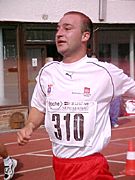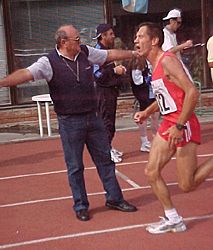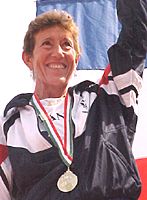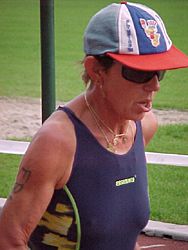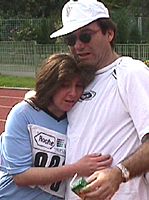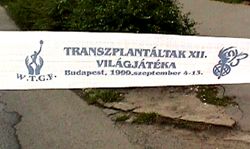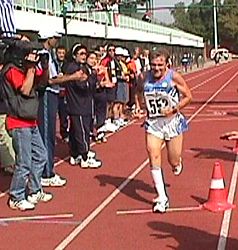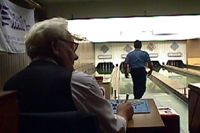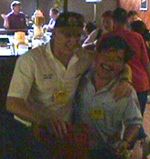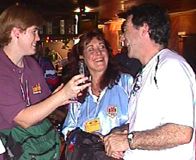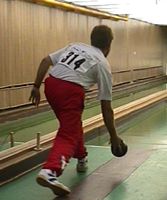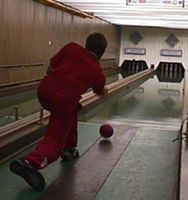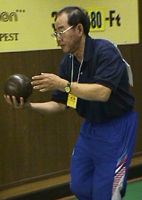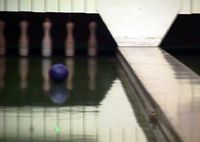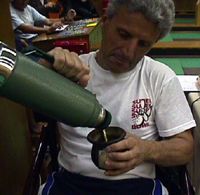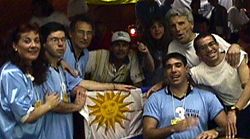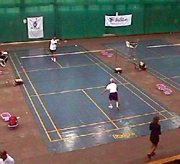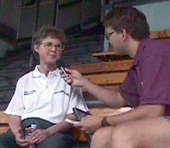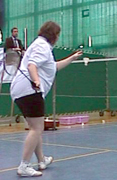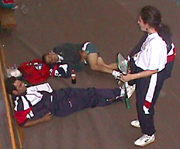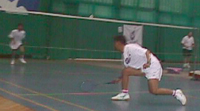| Select
a day
|
__
|
|
Margaret Island is a picturesque and scenic park that seems like
a quiet refuge from the bustle of the city in Budapest. The big
city that is divided into Buda and Pest by the slow moving Danube
River sprawls in both directions from its many bridges. The Margit
Hid (Hungarian for Margaret Bridge) has an exit midway across the
River which leads down a ramp to the South end of Margaret Island.
Within moments of departing the traffic congestion, big buildings
and loud cars, one is overcome with the tranquility of the island.
The big electronic sign outside the stadium kept toggling between
16 and 17 degrees celsius while the clouds teased the sun above.
Perfectly calm and bright, the conditions were wonderful for this
event.
The Track and Field Center is on the south end of the island where
hundred of transplant recipients gathered this morning. Nearly a
hundred runners, accompanied by many more onlookers and teammates
waited nervously for the start of the races. The women's race was
a 3K loop course on the island. Although the course didn't take
the runners along the edge of the Danube, the course was well marked
along "promenades" which are actually walking paths through the
woods. With a bang and a cloud of smoke from the gun, the women
were off. The start and finish lines were both on the red cushioned
surface of the 400 meter track but the course led the runners around
the island. Once the women finished, the men's 5K run began and
followed a similar course. The loop course through the island didn't
allow spectators to see the runners until they returned to the track
for the finish. The roar of the moped leading the way alerted those
of us in the stadium that the fastest finishers would be there soon.
A video crew on a motorcycle was just ahead of the fastest finishers
who were clearly giving their all. Cheers, chants and cries of joy
rang out from the stadium as the finishers completed the course.
Many of them were far behind the leaders and the cheers were just
as loud for those near the end as they were for the fastest runners.
The awards ceremony was bathed in the late morning sun which sent
gold, silver and bronze glints of reflection across the smiling
faces of hundreds of people. Ian Bronigan of Northern Ireland and
Agnes Jung of Hungary were the top finishers. Both of them echoed
the sentiment of so many people here: everyone who is here is a
winner!
|
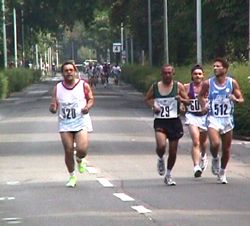
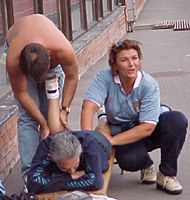



|

 |
|


|
|
 |
|
  |
|
  |
|
 |
|
 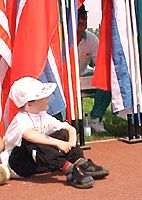 |
|
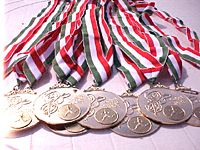 |
|
 |
|
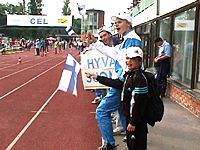 |
|
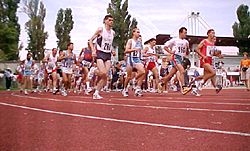 |
|
 |
|
|

|
|
|
I thought it was just me. That probably everyone else coming to
the transplant games had been playing skittles for years; there
were probably skittles leagues in countries all over the world,
and that only us folks in the U.S. had never heard of it. So I went
out on the Internet and downloaded the rules, and saw photographs
of skittles sets. It appeared to be a game played on a table top,
with five-inch tall pins which you try to knock down with a ball
that's suspended by a string above the pins.
|
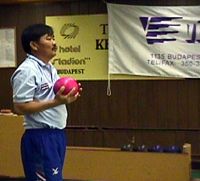 |
|
So far, so good. But that was the wrong kind of skittles.
We arrived at the Hotel Stadion skittles room and learned exactly
how wrong I was. Skittles looks a lot like ten-pin bowling! -- but
not exactly. It is played with a ball which does not have holes
for your fingers, and has a diameter of about seven inches and is
much lighter than a ten-pin bowling ball. You bowl it towards pins
that are at the end of a lane that has no gutters, just a border
that's wired to sense if your ball touches it, so a point can be
deducted from your score. The player gets five practice tries, then
ten attempts with a full set of pins each time (the goal being to
knock down as many pins as possible), then ten attempts during which
the pins are not reset (so you have ten tries to knock down all
nine pins)
Interesting! I wondered how many other attendees of the Games were
unfamiliar with skittles, and what they thought of this game.
|
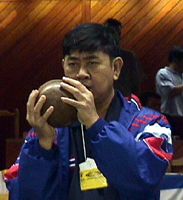
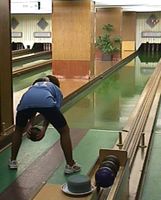
|
| The Australians told me they'd never seen it before,
and that they were expecting the pins to be closer - maybe 10 meters
away, possibly similar to bocce. One of the Aussies playing skittles
for the first time told me "I'm going to go back home to Australia
and tell them that ten-pin bowling is a baby's game, and skittles
is an art form!" |
|
| Skittles was also completely new to all fifteen of the
Thai athletes playing skittles today. They didn't know the rules,
but had fun anyway, having already been familiar with bowling. One
from Thailand said it was difficult to control the ball - you can't
really put a spin on it, and if your hand is small, you have to use
two hands in order to get up enough force. |
 |
| I asked the Uruguayans if they'd ever played skittles
before, and the answer was "No, never," although they do
play ten-pin bowling. They wished that they could have separate competitions
for those who've never seen skittles before. One of the women who
found it especially difficult because she has small hands (therefore
having to use both) was unfortunately playing against two Hungarian
women, for whom this is not a new activity. All the same, they enjoyed
playing. |
|
| The French, too, had never seen skittles before, and found it "difficile."
One of their number, playing for the first time, scored an amazing
127 points! |
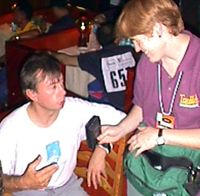 |
| A South African team member confirmed that skittles are unheard
of in his country. Reading the registration materials, skittles appeared
to be similar to ten-pin bowling, but not that similar. The
goal was to watch others as long as possible in order to learn prior
to competing. |
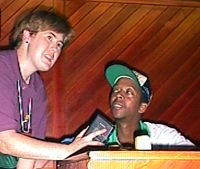 |
|
The Irish contingent, kidney recipient Maxie Scully, had played
skittles once before, when the Transplant Games were in Budapest
several years ago, but of course wasn't very familiar with it.
LISTEN
TO AUDIO, via  free player
free player
Maxie
Scully (photo at right),
talks about his transplant experience and says
"Don't take your organs to heaven;
heaven knows we need them here!"
|
 |
| Hats off to all these athletes for being game to try
something new; to play regardless of their unfamiliarity with the
game, all in the true spirit of sport! |
|









